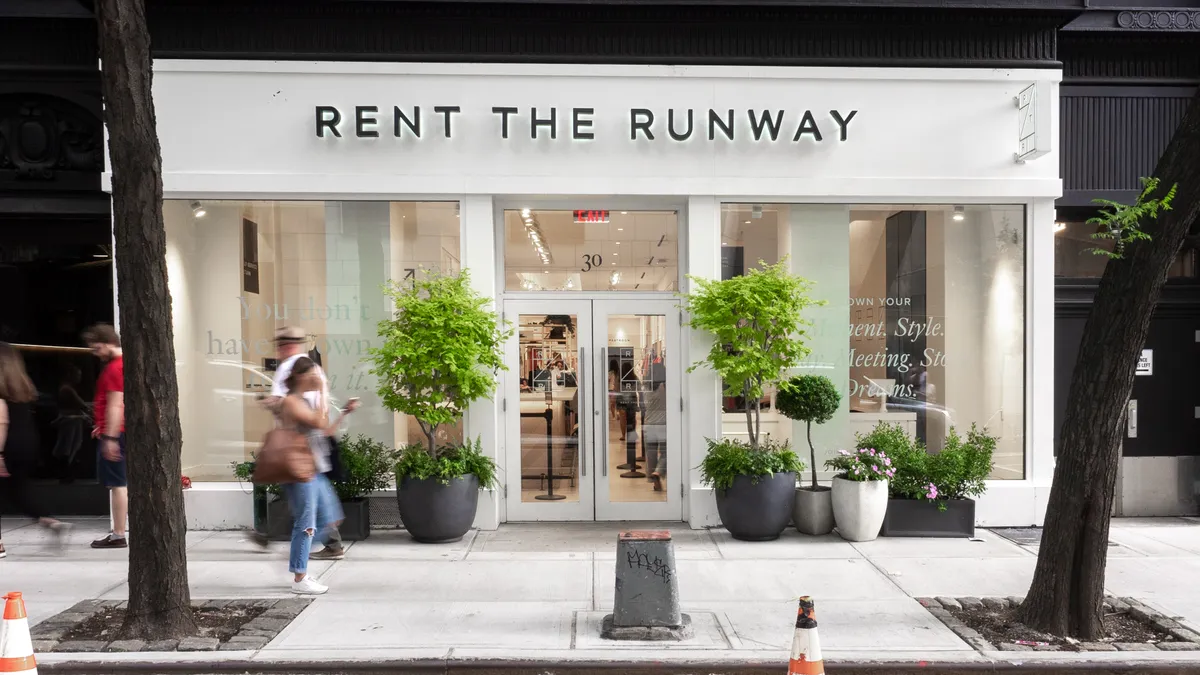Dive Brief:
-
Rent the Runway on Thursday said Q4 revenue rose 17.6% to $75.4 million, with active subscribers at quarter’s end up 10% year over year to 126,712. Gross margin expanded to 44.2%, from 36.7% a year ago. Net loss narrowed to $26.2 million from $39.3 million.
-
For the year, compared to 2021, revenue rose 46% and net loss narrowed to $138.7 million from $211.8 million, according to a company press release
-
The company said that Sid Thacker, senior vice president of financial planning and analysis, will take over as chief financial officer on May 25. CFO Scarlett O’Sullivan will remain as an adviser until Aug. 25.
Dive Insight:
It’s still not clear how much Rent the Runway’s niche business can grow, but Co-founder and CEO Jennifer Hyman on Thursday expressed full-throated confidence in its potential.
“I think that the [total addressable market] is really proving itself out to be a much bigger and more robust and faster-growing market than even when we IPO-ed 18 months ago,” she told analysts during a conference call.
The company’s active subscriber growth has already accelerated this year, reaching a record high 141,205 active subscribers on April 8, per its release. O’Sullivan said the aim is to top 25% in active subscriber growth this year.
Tweaks to its model have helped the company appeal to more shoppers, Hyman said. All of its subscription programs now include an extra item in every shipment, which amounts to 25% more value for the price. To accommodate its expected growth in subscribers, the company plans capital expenditures of $69 million to $72 million in rental product, she also said.
A pilot program with Amazon is still in its early stages, and the company isn’t sure how that will proceed, Hyman said.
Like many tech-oriented e-retailers, however, the company, which has never turned profit, is now fixated on profitability as well as growth. In an effort to tamp down costs, the service last year laid off about a quarter of its corporate workforce.
Wells Fargo analysts led by Ike Boruchow said they are encouraged by the company’s increasing visibility into its margins and progress on free cash flow, and that its ability to get into the black will depend on its revenue growth, gross margin (including improvements to its fulfillment margins) and lower product depreciation.
“As with other newly public e-commerce companies that are unprofitable, a key question on the shares is: ‘At what point does the company become profitable?’” they said.













